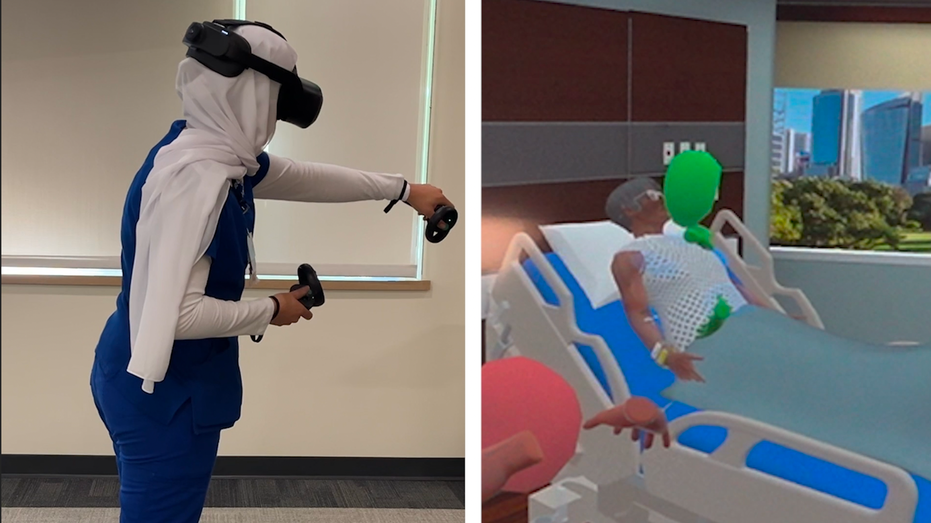
Nursing students at Goldfarb School of Nursing use virtual reality to practice clinical skills in a simulated environment, preparing for real-world health care challenges amid a growing shortage.
Virtual reality isn’t just for video games.
Some nursing students in St. Louis are using it to practice high-tech training without the need for real patients.
Goldfarb School of Nursing has integrated VR into its curriculum to give students a chance to hone skills in a different way.
BURNT OUT AND GETTING OUT: AMERICAN HOSPITALS STRUGGLE WITH INCREASING SHORTAGE OF NURSES
As the demand for nurses continues to rise — McKinsey & Company projects a shortage of 200,000 to 450,000 nurses next year — this technology is helping future health care workers prepare more effectively and efficiently.
Katie Jett, program director at Goldfarb, said virtual reality not only helps students with clinical skills but also makes learning more engaging.
“It’s the new way that people connect and communicate, and that can be offputting to someone who is older, because that’s not the way that we connected,” Jett told Fox News.
“But when you think about how people are connecting, how adolescents and young adults are connecting, a lot of it is through virtual experiences and gaming and technology.”
NURSING SCHOOLS FAST TRACK TRAINING TO COMBAT SHORTAGE
In addition to medical tasks, VR simulations help students practice their communication and bedside manner.
Zykita Deal, a nursing student at Goldfarb, shared how she practiced delivering advice to a virtual patient.
“I was just talking to him about eating better, how to have a better routine with his medicines … and I was giving him a recommendation on how to not be [as] lonely, since he still has his son and they can still create meals that his wife used to make,” Deal said.
PARENTS TRUST AI FOR MEDICAL ADVICE MORE THAN DOCTORS, RESEARCHERS FIND
“He could keep his wife’s memory alive” this way, she added.
Students gear up with VR goggles and controllers to perform a variety of tasks, while instructors select responses for virtual patients, creating realistic scenarios that challenge students.
Lesley Schwartz, another nursing student, said the technology helps her prepare for real-world situations.
NURSES SPEAK OUT: ‘WHAT I WISH I’D KNOWN BEFORE ENTERING THE PROFESSION’
“There’s going to be times when the vitals are going to be conveniently close to you,” she said.
For more Health articles, visit www.foxnews.com/health
“There’s going to be times when you’re going to have to go get a vital cart to come into the room with. And it just kind of helps with your preparedness. When you get thrown into the virtual reality, you don’t get a brief as to where everything is.”
Research by Wolters Kluwer indicates that 65% of nursing education programs use VR in some capacity.
CLICK HERE TO SIGN UP FOR OUR HEALTH NEWSLETTER
Goldfarb combines VR training with full-body patient simulators, providing an engaging learning experience.
“It brings fun to learning and that way you’re not just always sitting behind a desk and hearing someone talk,” Deal said.
Jett plans to expand the program, incorporating more advanced nursing scenarios to further enhance student training.